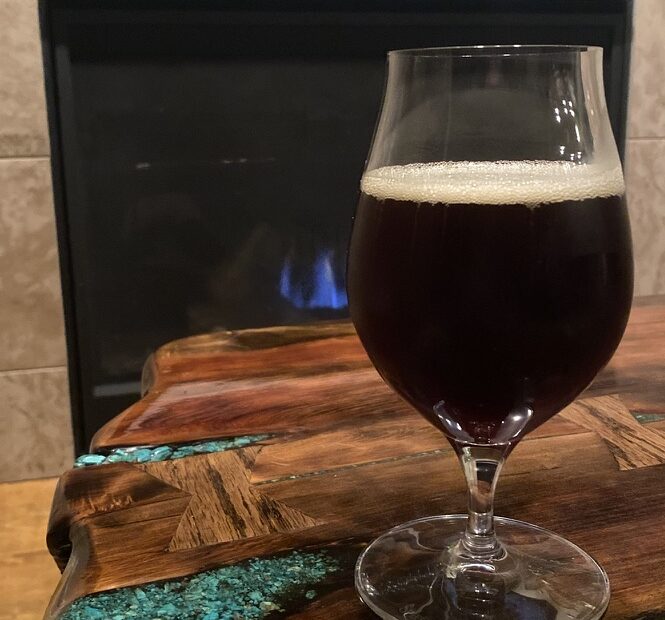Are you interested in brewing a rich and malty doppelbock? The following is my one gallon doppelbock BIAB recipe.
What is a Doppelbock?
The doppelbock is a strong, rich, and very malty lager. The intense maltiness has given this style the nickname, “liquid bread”.
Doppelbocks were originally brewed in Munich, Germany by the monks of St. Francis of Paula. This filling beer was intended to be consumed during Lent at the time.
The prefix ‘doppel’ means double. This beer is meant to be a stronger and richer version of the traditional bock.
Color of doppelbocks can vary from deep gold to dark brown, darker versions often have some ruby highlights.
As noted above, the maltiness of doppelbocks should predominate the aroma and flavor. There may be toast in the aroma or flavor, but the beer should not taste roasty or burnt. There may also be some moderate fruitiness (prune, plum or grape) noted in the flavor and/or aroma. For the full BJCP guideline writeup on the Doppelbock (5C), please follow this link.
In my humble opinion, this beer is a joy to drink, especially on a colder night!
It is worth noting that this beer was a warm-fermented lager. Meaning that it was not fermented at standard lagering temperatures (45-55F), and instead fermented at room temperature of my house (about 67F). This method requires much less equipment, and I have had good results on several occasions using this method.
If you’re interested in learning more about the warm-fermented lager technique, click here! Some may call this a ‘pseudo-lager’, but I feel that as long as the quality of the end product is sound, that’s what matters most!
Stats:
Volume: 1.25 gallons
Predicted SRM 24.11
Predicted IBU 23.07
Original Gravity 1.075
Final Gravity 1.015
ABV- 7.88%
Grain:
4 lb Munich Light (6L)
13 oz Pilsen Light (1.2L)
2 oz Victory Malt
2 oz Chocolate Malt
Strike water 160F, mash started at 152
Hops:
0.25 oz Hallertau Mittelfruh (60 minutes)
0.25oz Tettnanger (20 minutes)
Other Additions:
Irish Moss (10 minutes)
Water:
Local Flagstaff Tap Water
1/16 tsp Gypsum
1/5 tsp of CaCl
Mash pH 5.7
2.5 gallon boil (99 minute boil)
Yeast:
Saflager 34/70 (1 packet)
Directions:
Mill the grains and mix with 1.75 gallons of 160°F strike water to reach a mash temperature of 152°F. Hold this temperature for 60 minutes. Sparge the grains with 170°F water until you reach a volume of 2.5 gallons of wort. Boil for 99 minutes, following the hop schedule. Add Irish moss at 10 minutes.
After the boil, chill the wort to slightly below fermentation temperature, about 64°F. Aerate the wort and pitch the yeast. Ferment at 67°F (18°C) for 2-3 weeks, then cold crash the beer to 35°F. Bottle or keg the beer and carbonate to approximately 2.25 volumes of CO2.
Tips:
Clarifying Agents:
As this particular beer was warm fermented, it does not have the natural clarity advantage that true lagering provides. Time alone can do wonders for the clarity of a beer, but if you are looking for other agents, gelatin and Biofine Clear work well. However, keep in mind that if you are brewing a beer for any vegan or vegetarian consumers, gelatin will not fit the bill. Biofine Clear on the other hand is colloidal silicon dioxide and is vegan friendly.
Thank you for stopping by!
If you are interested in how to homebrew using the brew-in-a-bag BIAB method, please see my post here.
If you would like to see more small batch recipes like this, please follow this link.
